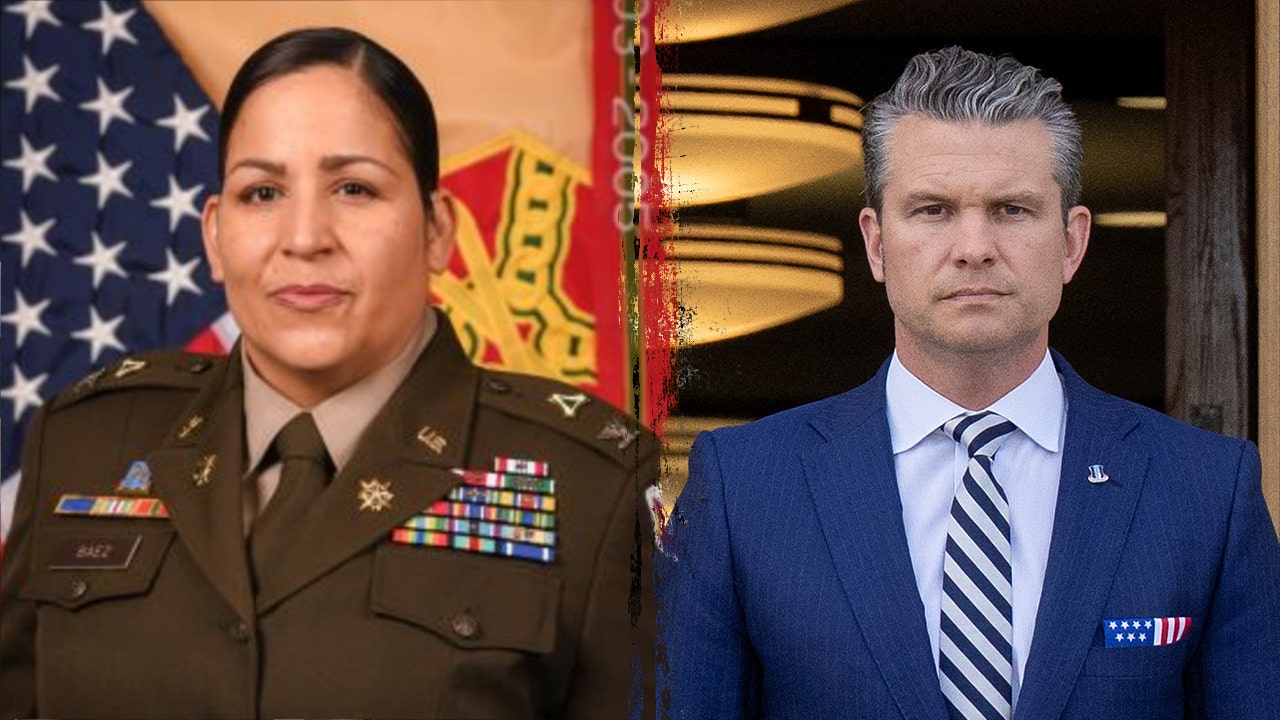The commander of Fort McCoy, Col. Sheyla Baez Ramirez, has been suspended from her duties following an investigation into missing portraits of former President Donald Trump, Vice President JD Vance, and Defense Secretary Pete Hegseth from the base’s chain of command display. This incident has sparked controversy and raised questions about political neutrality within the U.S. military. This article delves into the details surrounding the suspension, the ongoing investigation, and the broader implications for leadership and political impartiality in the armed forces.
The removal or absence of these portraits has triggered a probe by the Department of Defense (DOD). The investigation aims to determine the circumstances surrounding the missing portraits and whether any misconduct or political bias was involved. This situation unfolded amidst other leadership changes within the military, adding another layer of scrutiny to the matter. Understanding the full context of this event requires examining the sequence of events and the responses from various officials and departments.
Background of the Incident at Fort McCoy
Col. Sheyla Baez Ramirez’s suspension as garrison commander of Ft. McCoy in Wisconsin has drawn national attention. According to a statement from the U.S. Army Reserve Command, the suspension is “not related to any misconduct,” although the matter remains under review. This ambiguous explanation has fueled speculation and media interest, especially given the context of the missing portraits of key political figures.
The controversy gained further traction when Pete Hegseth reposted an X post highlighting the situation: “Commander of Fort McCoy, whose base chain-of-command board was missing photos of Trump, Vance and Hegseth, has been SUSPENDED.” This public statement amplified the visibility of the incident and underscored the political sensitivities involved. The Defense Department’s announcement of a probe into the empty frames on the chain of command wall only heightened public interest.
Details of the Defense Department’s Investigation
The Defense Department (DOD) has launched an investigation to ascertain why the wall displaying the chain of command at Fort McCoy had empty frames where the portraits of Trump, Vance, and Hegseth should have been displayed. The DOD’s rapid response account on X stated: “Regarding the Ft. McCoy Chain of Command wall controversy…. WE FIXED IT! Also, an investigation has begun to figure out exactly what happened.”
The investigation seeks to uncover whether the missing portraits were the result of an administrative oversight, a deliberate act of defiance, or some other cause. The findings could have significant implications for the individuals involved and for the broader perception of political neutrality within the military. The DOD’s commitment to resolving the issue swiftly indicates the seriousness with which they are treating the matter.
Col. Sheyla Baez Ramirez’s Profile
Col. Ramirez assumed the role of garrison commander in July of the previous year. Her prior experience includes serving as chief of the Reserve Program, United States Army Intelligence and Security Command at Fort Belvoir, Virginia, and various other roles within the Army and Army Reserves. Her extensive background suggests a career marked by dedication and service. However, this recent suspension places her career under intense scrutiny.
The suspension raises questions about the standards expected of military leaders and the potential repercussions of even seemingly minor oversights. Understanding Ramirez’s professional history is crucial to assessing the context and implications of her current situation. Her leadership and adherence to protocol will likely be central to the ongoing investigation.
Other Leadership Shake-Ups in the Military
The suspension of Col. Ramirez follows a series of leadership shake-ups across the U.S. military. Earlier in the month, the Pentagon relieved the base commander for Pituffik Space Force Base after she “undermined” Vice President Vance. These events suggest a heightened sensitivity to political alignment and leadership conduct within the armed forces.
Col. Susannah Meyers, the commander relieved from Pituffik Space Force Base, sent an email to base personnel expressing concerns about Vance’s visit, stating that the concerns discussed were “not reflective of Pituffik Space Base.” This incident underscores the challenges military leaders face in navigating political expectations while maintaining their duty to their personnel and the integrity of their commands.
Hegseth’s Response and Firings
Defense Secretary Pete Hegseth also experienced internal turmoil, firing four former aides after in-fighting and a leak investigation. Hegseth attributed the leaks to “disgruntled employees” who shared reports about a second Signal chat discussing Houthi strikes, which included his wife, brother, and personal lawyer.
This series of events highlights the intense pressures and scrutiny faced by high-ranking officials and the potential for internal conflicts to spill into the public sphere. The combination of leadership changes, investigations, and internal disputes paints a complex picture of the challenges within the U.S. military and the broader defense establishment.
Conclusion: Implications and Future Outlook
The suspension of Col. Sheyla Baez Ramirez and the surrounding events underscore the critical importance of political neutrality and adherence to protocol within the U.S. military. The ongoing investigations and leadership shake-ups reflect a commitment to upholding these standards, but also highlight the potential for missteps and controversies.
As the investigations conclude and further details emerge, it will be essential to analyze the implications for military leadership and the broader perception of political impartiality in the armed forces. The outcomes of these events will likely shape future policies and expectations, ensuring that the military remains focused on its core mission of defending the nation while upholding the principles of fairness and objectivity.

Leave a Reply